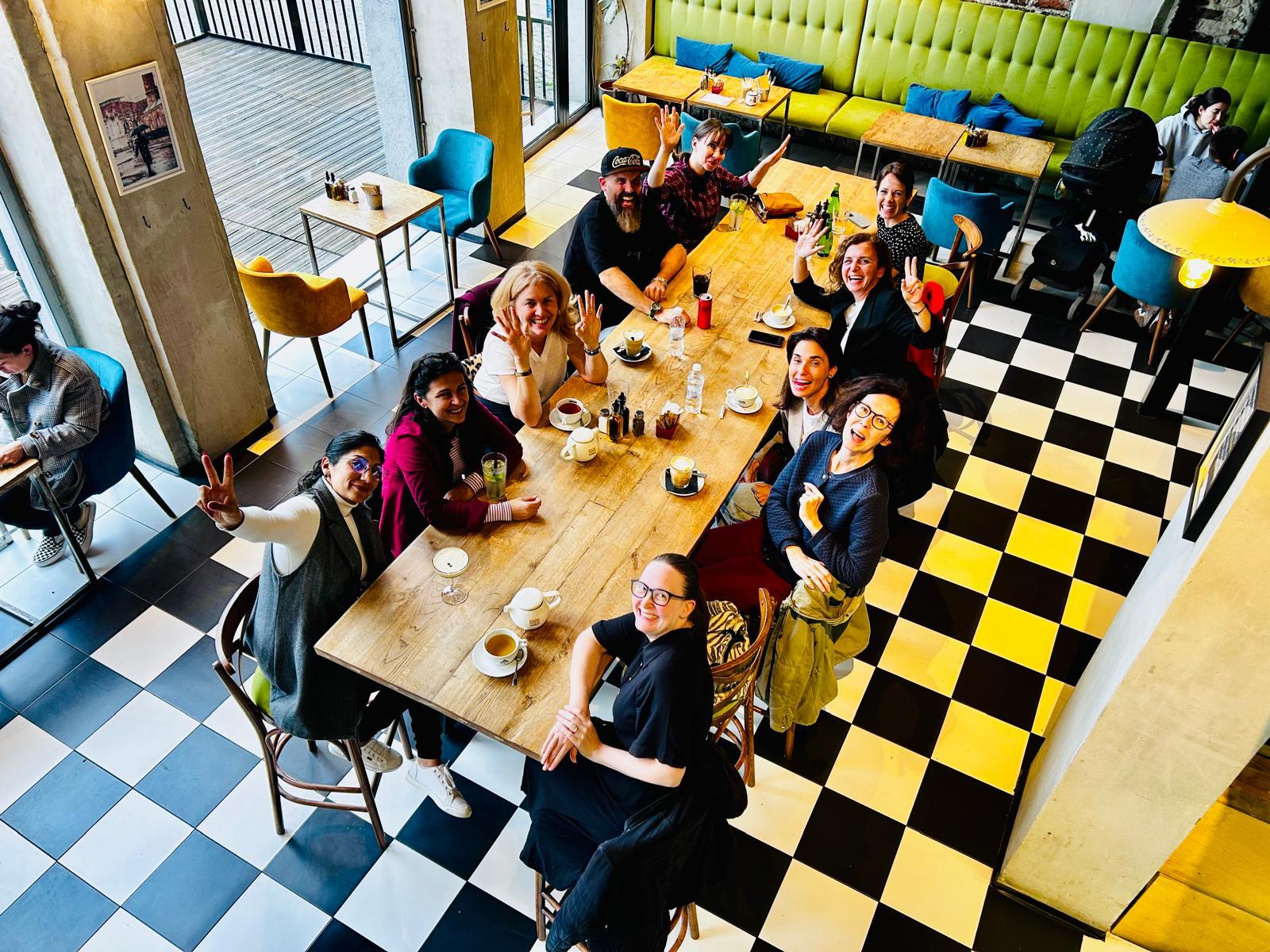Eli's Portal: How One Individual Drove Deep Transformation in Coca-Cola Europacific Partners
A Restless Beginning
When Eli Dublewa-Servatius watched another colleague drift away from her team’s legacy translation system in favor of the latest AI assistant, she didn’t feel threatened.
She felt restless.
There was a sharp awareness that even inside a company as vast and capable as Coca-Cola Europacific Partners (LON: CCEP), people were moving faster than the systems meant to serve them. The future wasn’t waiting for new processes to catch up; it was already here, speaking in a thousand voices, some human, some synthetic.
.jpeg)
The Engineer’s Heart
Eli is not someone who accepts “good enough.” She has the mind of an engineer and the heart of a translator, equal parts logic and empathy. Her colleagues describe her as someone who listens for patterns beneath the noise, who can sense what’s off long before anyone else does.
So when she began imagining a language portal for CCEP, it wasn’t really about translation at all.
It was about what it means to be understood.
Inside the CCEP Ecosystem
CCEP is a vast ecosystem of 41,000 employees across 31 countries, from bottling lines in Antwerp to marketing hubs in Sydney. Within that sprawl lies both beauty and friction.
Messages travel across departments, time zones, and languages, often losing tone and nuance along the way. An update meant to inspire could arrive as a command. A safety memo written in English might sit unread by the people who need it most.
For Eli, this wasn’t a technical gap; it was a human one.
Language was the bloodstream of the company, and somewhere in the flow, meaning was clotting.
A Portal Takes Shape
She began sketching an idea that at first seemed naive: a single portal that could take any message, text, document, or video, and carry it across languages without losing its pulse.
Not a translation system, but a conversation system that could mirror the company’s personality wherever it spoke. She didn’t want to chase trends or patch old tools.
She wanted to rebuild trust in communication itself.
Enter Bureau Works
That’s when Bureau Works entered the picture. Their approach to translation wasn’t about replacing humans with algorithms, it was about building systems that understand context: the who, what, and why behind every word.
Together, Eli’s team and Bureau Works began shaping something deceptively simple: a clean interface where an employee could drop in a file and, moments later, receive a translation that looked and felt like the original, branded, formatted, and complete.
Behind that surface was an orchestration of context, memory, and intelligence. Each translation drew from CCEP’s own linguistic DNA: years of internal phrasing, terminology, and tone that made up the company’s voice.
The system didn’t merely translate; it listened, learned, and re-expressed what CCEP meant, not just what it said.
A New Standard for Enterprise AI
It could handle over fifty file types, preserving PowerPoint animations, brand colors, and typography as faithfully as it did tone. It could even speak, generating voice output in local accents, so that a safety briefing recorded in English could reach a warehouse in Paris or a bottling line in Jakarta.
Behind the scenes, the architecture was model agnostic, secure, and sustainable.
The AI ran on stateless protocols, ensuring no sensitive information lingered. It could draw from multiple large language models, GPT, Claude, Gemini, but remained fully under the company’s control.
It didn’t just meet enterprise standards; it quietly redefined them.
From Translation to Connection
When the first pilot went live, something subtle happened. People stopped talking about translation, and started talking about communication.
Managers shared stories of surprise:
- The procurement officer in France who could finally read a technical document from the UK without waiting a week.
- The training coordinator in Indonesia who used the voice feature to narrate a safety video in Bahasa, laughing as her team recognized familiar phrasing delivered in their own accent.
It wasn’t just that the system worked. It was that it sounded human, and in a company this large, that was a radical thing.
A Quiet Gestalt Shift
Inside CCEP, the rollout felt less like a technology launch and more like a cultural shift. The portal didn’t demand behavior change; it invited participation. People didn’t need to learn a new tool, they simply discovered that language barriers were dissolving around them.
There was curiosity, yes, but mostly a kind of disciplined excitement, the rhythm of a global organization learning a new way to breathe.
Managers began using a new phrase: “Smiles on faces.” A phrase so small it could have been overlooked, but inside a multinational system, it meant everything. The smiles were the proof.
The Early Adopters
The early adopter program is already showing what this new system makes possible. In one pilot group, an HR manager who used to post videos only in English decided to test the new workflow.
Using the Bureau Works platform, she released her latest update in nine languages at once.
Overnight, engagement doubled, and more importantly, messages began to land differently. Comments poured in from warehouse teams, field operators, and regional offices that had never interacted before.
It wasn’t just about reach anymore.
It was about resonance.
People weren’t just reading; they were connecting.

From Language to Perspective
That’s when Eli realized the true potential of what they were building. It wasn’t only about crossing languages, t was about crossing perspectives.
With Bureau Works’ Sous Chef framework, each translation could be guided by personas that mirror the real audiences inside CCEP.
A message crafted for a senior executive can now carry a different texture when addressed to a production line, warmer, more direct, grounded in everyday experience.
None of it is better or worse. It’s simply more attuned. The system makes it possible to translate not just between tongues, but between roles, contexts, and lived realities.
A New Kind of Inclusivity
For Eli, that’s what real inclusivity looks like: when a company doesn’t just speak in many languages, but thinks in them. When communication bends toward the listener rather than the sender.
The full rollout is still ahead, but the first phase has already revealed the shape of something transformative. What began as an experiment in accessibility is turning into a deeper kind of intelligence, one that understands that people don’t all need the same message, just the same opportunity to understand it.
The System That Listens
Soon, as the portal expands across CCEP, more screens will light up with messages that sound unmistakably like the company itself: precise when it needs to be, human when it matters most.
Eli thinks of the HR manager who reached nine languages in one click, and smiles.
The system is learning. More importantly, it’s beginning to listen.
Unlock the power of glocalization with our Translation Management System.
Unlock the power of
with our Translation Management System.













.avif)
.png)
.avif)
.png)
.avif)

.png)





.png)